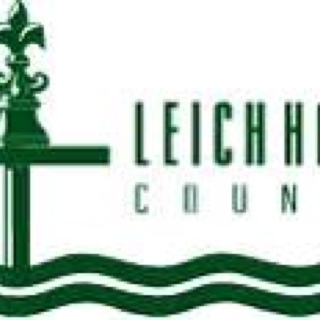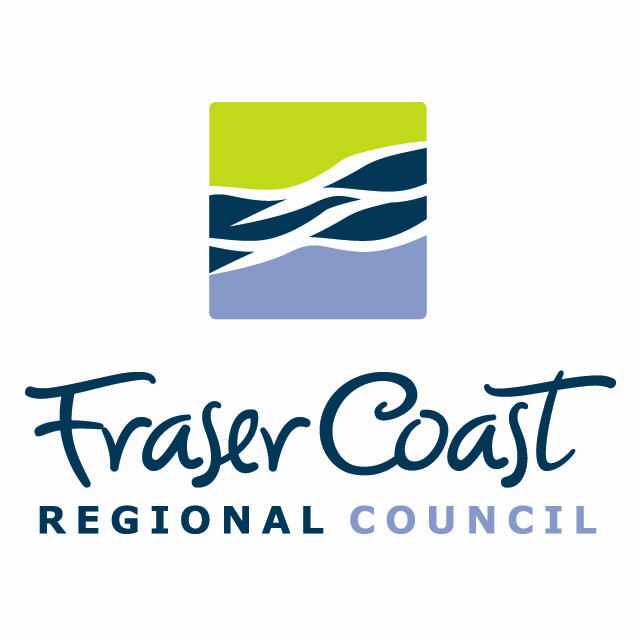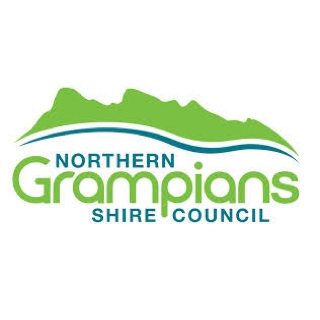Information
-
Audit Title
-
Document No.
-
Client / Site
-
Conducted on
-
Prepared by
-
Location
-
Personnel
Application details
-
Applicant name
-
Sketch showing location of trees
Tree 1
-
Tree species 1
-
Photograph of tree 1
-
Determination Tree 1
Tree 1 assessment
-
Is the tree in decline?
-
Has the tree been incorrectly pruned in the pasts?
-
Is the tree not growing true to form?
-
Is the tree causing property damage?
-
Is the tree interfering with sewer pipes?
-
Is the tree overcrowded by surrounding trees?
-
Has the tree been in appropriately planted?
-
Does the tree display weak branch structure?
-
Does the tree display a history of branch failure?
-
Is the tree interfering with overhead powerlines?
-
Does the tree display evidence of Bracket Fungi which may affect the structural integrity?
-
Does the tree display evidence of decay which may affect the structural integrity?
-
Does the tree contain cavities which may affect the structural integrity?
-
Is the tree a multi-trunked specimen which is prone to failure?
-
Does the tree include bark between stems/branches which may affect the structural integrity?
-
Does the tree display evidence of extensive termite activity which may affect structural integrity?
-
Is the tree dead and consent from Council not required for removal?
-
Is the tree exempt from Council's Tree and Bushland Management Provisions and therefore can be removed?
Pruning recommendations
-
Is to be retained as it was in healthy condition at time of inspection.
-
Pruned to shape by removing no more than 15% of the canopy. No cut shall be more than 150mm in diameter.
-
Deadwooded and selectively thinned by removing no more than 15% of the canopy. No cut shall be more than 150mm in diameter.
-
Deadwooded and pruned to shape by removing no more than 15% of the canopy. No cut shall be more than 150mm in diameter.
-
Deadwooded and pruned to reduce end weight by removing no more than 15% of the canopy. No cut shall be more than 150mm in diameter.
-
Conifers should be reduced in height by removing no more than 1/4 of the canopy.
-
To provide a 500mm clearance from overhead power lines.
-
Your neighbour must be notified prior to undertaking any pruning works on their tree.
-
To reduce the wind sail effect.
-
This will alleviate your concerns regarding branch drop.
-
The matter will be re-assessed once a plumbers/structural engineers/pest report is submitted, substantiating that the tree is causing damage to property.
-
Should you wish to submit a report from an independent, suitably qualified AQF Level 5 Arborist, to establish the viability of the tree/s, such a report will be reviewed by Council staff and a re-inspection carried out.
Tree 2
-
Does the application include a second tree?
-
Tree species 2
-
Photograph of tree 2
-
Determination Tree 2
Tree 2 assessment
-
Is the tree in decline?
-
Has the tree been incorrectly pruned in the pasts?
-
Is the tree not growing true to form?
-
Is the tree causing property damage?
-
Is the tree interfering with sewer pipes?
-
Is the tree overcrowded by surrounding trees?
-
Has the tree been in appropriately planted?
-
Does the tree display weak branch structure?
-
Does the tree display a history of branch failure?
-
Is the tree interfering with overhead powerlines?
-
Does the tree display evidence of Bracket Fungi which may affect the structural integrity?
-
Does the tree display evidence of decay which may affect the structural integrity?
-
Does the tree contain cavities which may affect the structural integrity?
-
Is the tree a multi-trunked specimen which is prone to failure?
-
Does the tree include bark between stems/branches which may affect the structural integrity?
-
Does the tree display evidence of extensive termite activity which may affect structural integrity?
-
Is the tree dead and consent from Council not required for removal?
-
Is the tree exempt from Council's Tree and Bushland Management Provisions and therefore can be removed?
Pruning recommendations
-
Is to be retained as it was in healthy condition at time of inspection.
-
Deadwooded and selectively thinned by removing no more than 15% of the canopy. No cut shall be more than 150mm in diameter.
-
Deadwooded and selectively thinned by removing no more than 15% of the canopy. No cut shall be more than 150mm in diameter.
-
Deadwooded and pruned to shape by removing no more than 15% of the canopy. No cut shall be more than 150mm in diameter.
-
Deadwooded and pruned to reduce end weight by removing no more than 15% of the canopy. No cut shall be more than 150mm in diameter.
-
Conifers should be reduced in height by removing no more than 1/4 of the canopy.
-
To provide a 500mm clearance from overhead power lines.
-
Your neighbour must be notified prior to undertaking any pruning works on their tree.
-
To reduce the wind sail effect.
-
This will alleviate your concerns regarding branch drop.
-
The matter will be re-assessed once a plumbers/structural engineers/pest report is submitted, substantiating that the tree is causing damage to property.
-
Should you wish to submit a report from an independent, suitably qualified AQF Level 5 Arborist, to establish the viability of the tree/s, such a report will be reviewed by Council staff nada re-inspection carried out.
Tree 3
-
Does the application include a third tree?
-
Tree species 3
-
Photograph of tree 3
-
Determination Tree 3
Tree 3 assessment
-
Is the tree in decline?
-
Has the tree been incorrectly pruned in the pasts?
-
Is the tree not growing true to form?
-
Is the tree causing property damage?
-
Is the tree interfering with sewer pipes?
-
Is the tree overcrowded by surrounding trees?
-
Has the tree been in appropriately planted?
-
Does the tree display weak branch structure?
-
Does the tree display a history of branch failure?
-
Is the tree interfering with overhead powerlines?
-
Does the tree display evidence of Bracket Fungi which may affect the structural integrity?
-
Does the tree display evidence of decay which may affect the structural integrity?
-
Does the tree contain cavities which may affect the structural integrity?
-
Is the tree a multi-trunked specimen which is prone to failure?
-
Does the tree include bark between stems/branches which may affect the structural integrity?
-
Does the tree display evidence of extensive termite activity which may affect structural integrity?
-
Is the tree dead and consent from Council not required for removal?
-
Is the tree exempt from Council's Tree and Bushland Management Provisions and therefore can be removed?
Pruning recommendations
-
Is to be retained as it was in healthy condition at time of inspection.
-
Pruned to shape by removing no more than 15% of the canopy. No cut shall be more than 150mm in diameter.
-
Deadwooded and selectively thinned by removing no more than 15% of the canopy. No cut shall be more than 150mm in diameter.
-
Deadwooded and pruned to shape by removing no more than 15% of the canopy. No cut shall be more than 150mm in diameter.
-
Deadwooded and pruned to reduce end weight by removing no more than 15% of the canopy. No cut shall be more than 150mm in diameter.
-
Conifers should be reduced in height by removing no more than 1/4 of the canopy.
-
To provide a 500mm clearance from overhead power lines.
-
Your neighbour must be notified prior to undertaking any pruning works on their tree.
-
To reduce the wind sail effect.
-
This will alleviate your concerns regarding branch drop.
-
The matter will be re-assessed once a plumbers/structural engineers/pest report is submitted, substantiating that the tree is causing damage to property.
-
Should you wish to submit a report that includes findings of an aerial inspection and supporting photographs from an independent, suitably qualified, AQF Level 5 Arborist to establish the viability of the tree/s, such a report will be reviewed by a council staff and re- inspection carried out.
Tree 4
-
Does the application include a fourth tree?
-
Tree species 4
-
Photograph of tree 4
-
Determination Tree 4
Tree 4 assessment
-
Is the tree in decline?
-
Has the tree been incorrectly pruned in the pasts?
-
Is the tree not growing true to form?
-
Is the tree causing property damage?
-
Is the tree interfering with sewer pipes?
-
Is the tree overcrowded by surrounding trees?
-
Has the tree been in appropriately planted?
-
Does the tree display weak branch structure?
-
Does the tree display a history of branch failure?
-
Is the tree interfering with overhead powerlines?
-
Does the tree display evidence of Bracket Fungi which may affect the structural integrity?
-
Does the tree display evidence of decay which may affect the structural integrity?
-
Does the tree contain cavities which may affect the structural integrity?
-
Is the tree a multi-trunked specimen which is prone to failure?
-
Does the tree include bark between stems/branches which may affect the structural integrity?
-
Does the tree display evidence of extensive termite activity which may affect structural integrity?
-
Is the tree dead and consent from Council not required for removal?
-
Is the tree exempt from Council's Tree and Bushland Management Provisions and therefore can be removed?
Pruning recommendations
-
Is to be retained as it was in healthy condition at time of inspection.
-
Pruned to shape by removing no more than 15% of the canopy. No cut shall be more than 150mm in diameter.
-
Deadwooded and selectively thinned by removing no more than 15% of the canopy. No cut shall be more than 150mm in diameter.
-
Deadwooded and pruned to shape by removing no more than 15% of the canopy. No cut shall be more than 150mm in diameter.
-
Deadwooded and pruned to reduce end weight by removing no more than 15% of the canopy. No cut shall be more than 150mm in diameter.
-
Conifers should be reduced in height by removing no more than 1/4 of the canopy.
-
To provide a 500mm clearance from overhead power lines.
-
Your neighbour must be notified prior to undertaking any pruning works on their tree.
-
To reduce the wind sail effect.
-
This will alleviate your concerns regarding branch drop.
-
The matter will be re-assessed once a plumbers/structural engineers/pest report is submitted, substantiating that the tree is causing damage to property.
-
Should you wish to submit a report that includes findings of an aerial inspection and supporting photographs from an independent, suitably qualified, AQF Level 5 Arborist to establish the viability of the tree/s, such a report will be reviewed by a council staff and re- inspection carried out.
Tree 5
-
Does the application include a fifth tree?
-
Tree species 5
-
Photograph of tree 5
-
Determination Tree 5
Tree 5 assessment
-
Is the tree in decline?
-
Has the tree been incorrectly pruned in the pasts?
-
Is the tree not growing true to form?
-
Is the tree causing property damage?
-
Is the tree interfering with sewer pipes?
-
Is the tree overcrowded by surrounding trees?
-
Has the tree been in appropriately planted?
-
Does the tree display weak branch structure?
-
Does the tree display a history of branch failure?
-
Is the tree interfering with overhead powerlines?
-
Does the tree display evidence of Bracket Fungi which may affect the structural integrity?
-
Does the tree display evidence of decay which may affect the structural integrity?
-
Does the tree contain cavities which may affect the structural integrity?
-
Is the tree a multi-trunked specimen which is prone to failure?
-
Does the tree include bark between stems/branches which may affect the structural integrity?
-
Does the tree display evidence of extensive termite activity which may affect structural integrity?
-
Is the tree dead and consent from Council not required for removal?
-
Is the tree exempt from Council's Tree and Bushland Management Provisions and therefore can be removed?
Pruning recommendations
-
Is to be retained as it was in healthy condition at time of inspection.
-
Pruned to shape by removing no more than 15% of the canopy. No cut shall be more than 150mm in diameter.
-
Deadwooded and selectively thinned by removing no more than 15% of the canopy. No cut shall be more than 150mm in diameter.
-
Deadwooded and pruned to shape by removing no more than 15% of the canopy. No cut shall be more than 150mm in diameter.
-
Deadwooded and pruned to reduce end weight by removing no more than 15% of the canopy. No cut shall be more than 150mm in diameter.
-
Conifers should be reduced in height by removing no more than 1/4 of the canopy.
-
To provide a 500mm clearance from overhead power lines.
-
Your neighbour must be notified prior to undertaking any pruning works on their tree.
-
To reduce the wind sail effect.
-
This will alleviate your concerns regarding branch drop.
-
The matter will be re-assessed once a plumbers/structural engineers/pest report is submitted, substantiating that the tree is causing damage to property.
-
Should you wish to submit a report from an independent, suitably qualified AQF Level 5 Arborist, to establish the viability of the tree/s, such a report will be reviewed by Council staff nada re-inspection carried out.
Replacement trees
-
Backhousia citriodora (Lemon Scented Myrtle)
-
Corymbia eximia (Yellow Bloodwood)
-
Corymbia gummifera (Red Bloodwood)
-
Corymbia maculata (Spotted Gum)
-
Elaeocarpus reticulatus (Blueberry Ash)
-
Eucalyptus crebra (Narrow Leaved Ironbark)
-
Eucalyptus leucoxylon (Yellow Gum)
-
Eucalyptus microcorys (Tallowwood)
-
Eucalyptus saligna (Sydney Blue Gum)
-
Eucalyptus sideroxylon (Red Ironbark)
-
Hymenosporum flavum (Native Frangipani)
-
Lophostemon confertus (Brush Box)
-
Syncarpia glomulifera (Turpentine)
-
Syzyigium leuhmannii (Riberry)
-
Tristaniopsis laurina (Water Gum)
-
Waterhousia floribunda (Weeping Lilly Pilly)
-
Additional tree species













